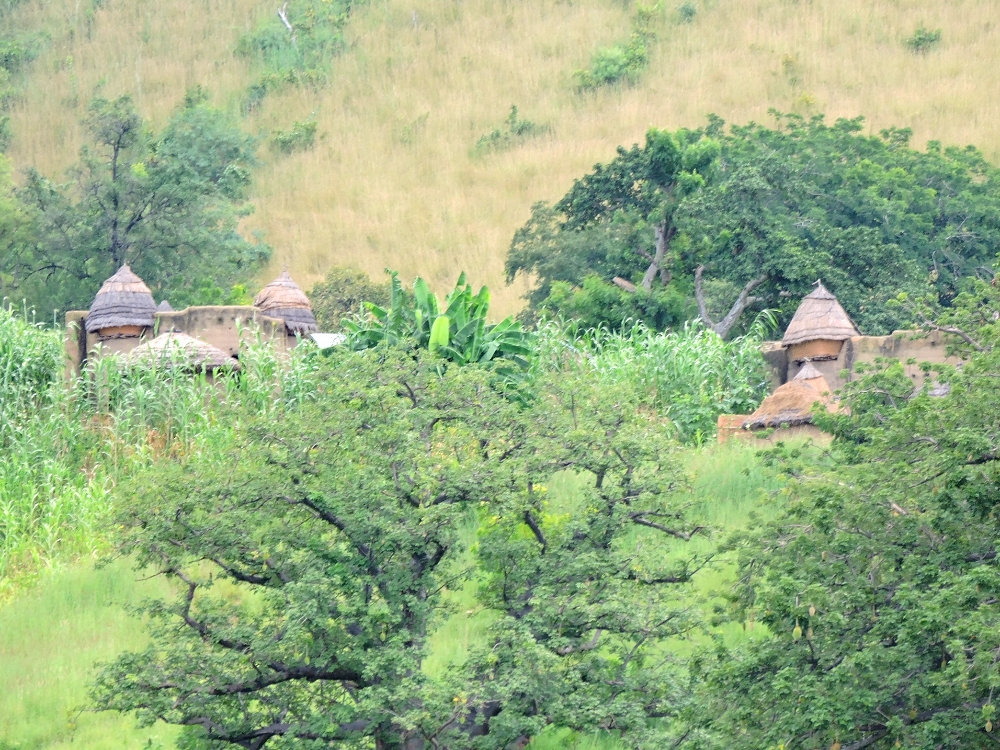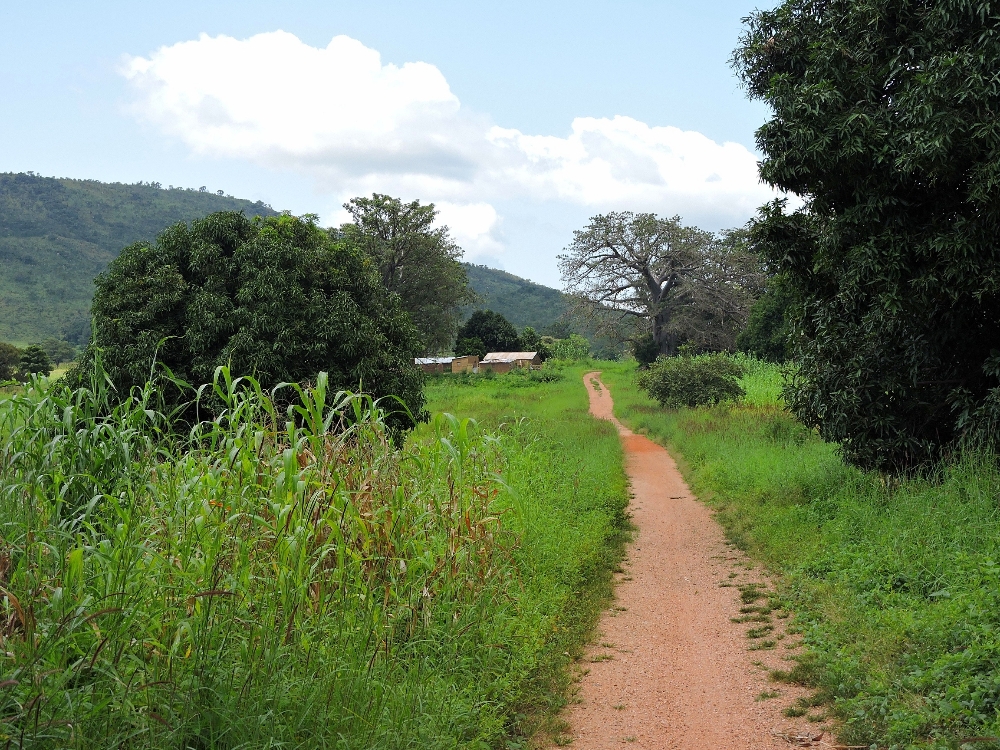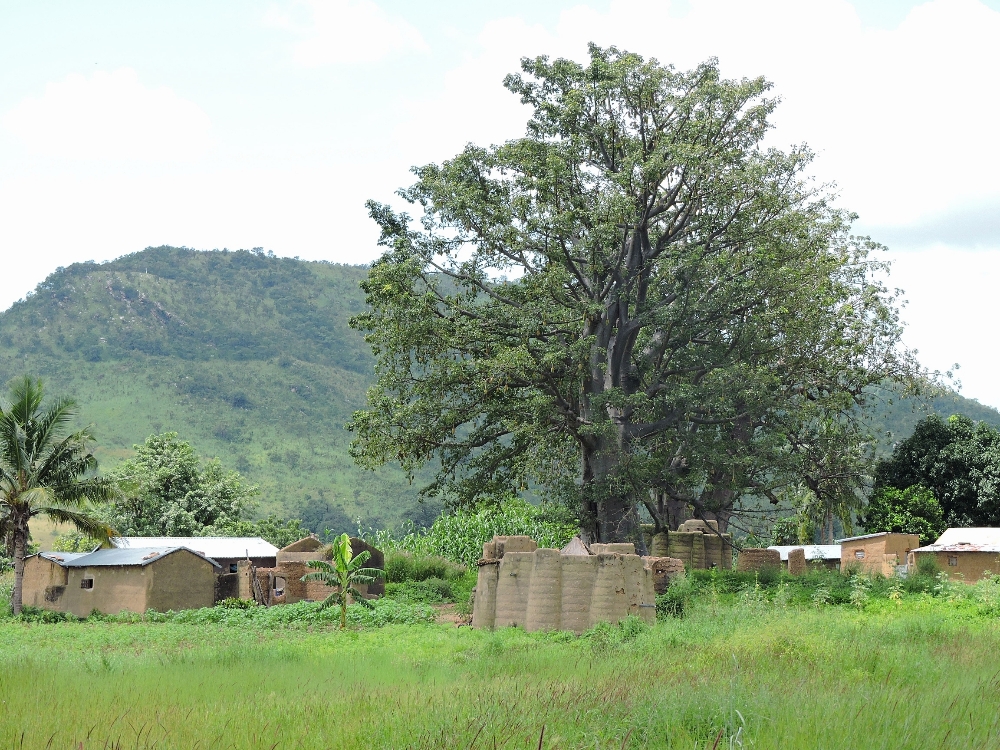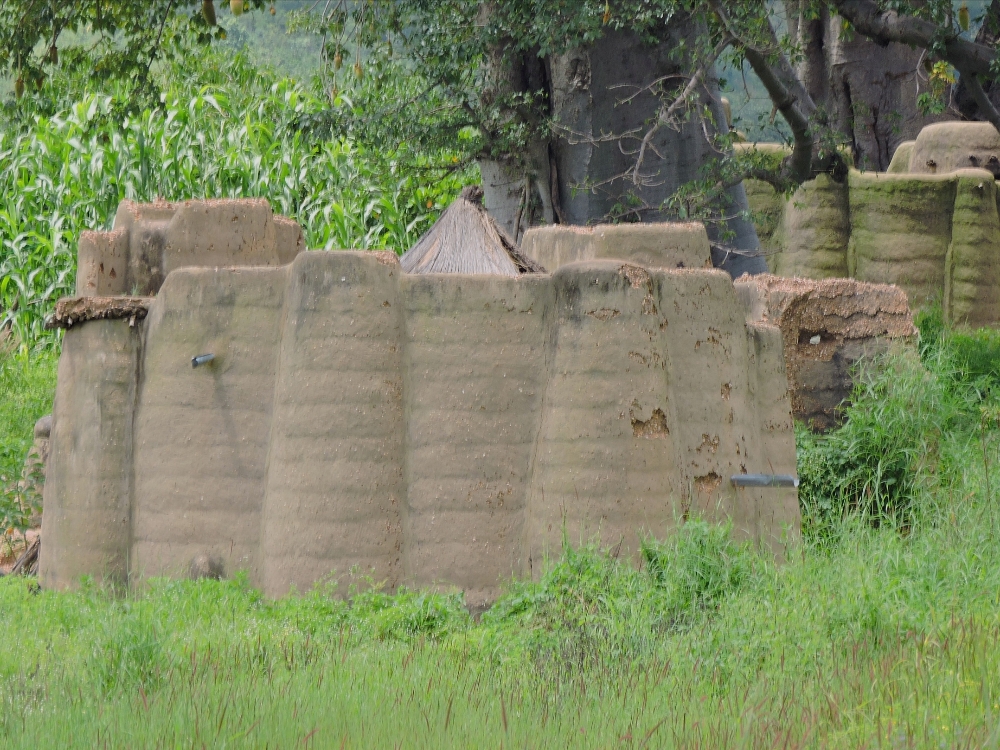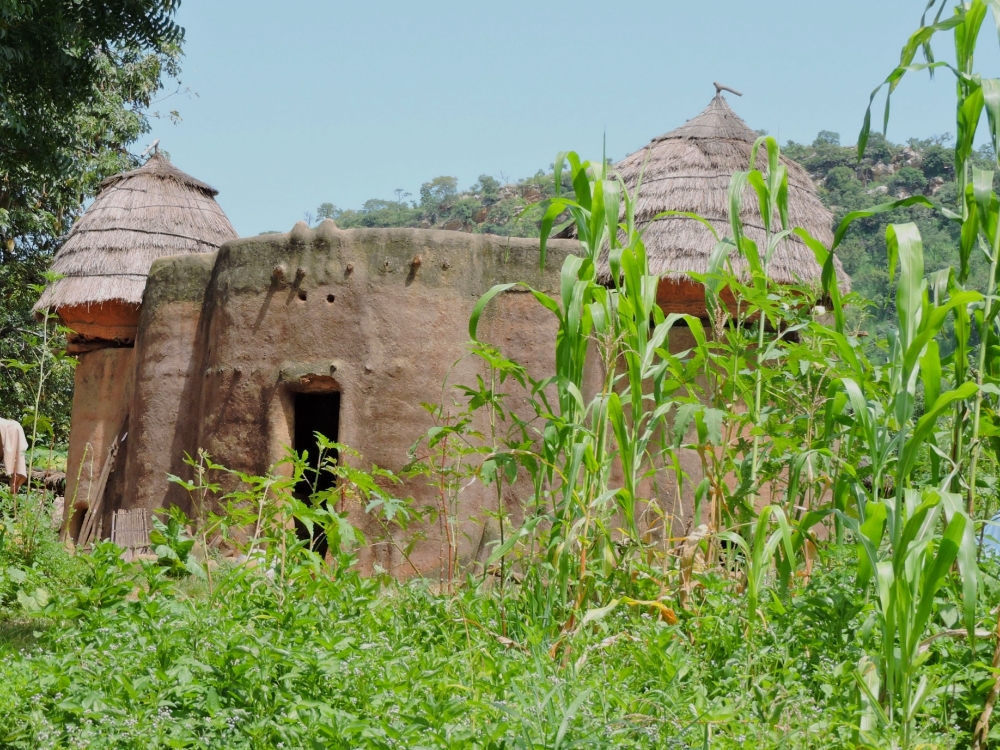Togo currently has only one World Heritage Site, located in the far northern part of the country. That fact influenced my routing choices over the last few weeks, leading me to undertake a relatively short route in Benin and a significantly longer distance in Togo. The Site is named Koutammakou, the land of the Batammariba
and it is a Site in the Cultural Landscape category and, as with other Sites of that type, it can often be difficult to know exactly what is included in the inscribed area. In this case, however, given the lengthy and fairly tiring journey needed to reach the Site, made all the more taxing by the always-steamy climate of the Gulf of Guinea region, I was more than willing to allow this visit to consist of a rather cursory passage.
The reason this area was designated as a WHS is that the Batammariba people, who live in several flat valleys, surrounded by gentle mountains, in a small region spanning the Togo-Benin border, have for centuries built their earthen homes according to a distinctive set of design principles. These usually include a high-walled enclosed area, and one or two taller towers with conical thatched roofs. The combination of these elements somewhat resembles a miniature castle from medieval Europe. As I understand it, the interiors are highly compartmentalized and are a fine example of an efficient use of minimal space. However, I did not experience that first-hand, since I was sensitive to the issue of people’s homes being turned into tourist attractions and decided not to try and arrange an indoor visit, even though most local people probably would have been happy to accept a small fee for that.
There were one or two other things that made my visit to this Site a little more complicated than it might have otherwise been. There is a very basic auberge within the bounds of the Site, but it did not have any online presence and, given the current circumstances, I did not attempt to stay there. Apart from that, the next closest place to stay is forty kilometers to the south, considerably farther than I initially guessed by looking at maps, with half of that distance over a minor gravel road. That meant that riding up to the Site, and back, would be a rather full and tiring day, and so I was fine with the idea of simply riding through the landscape and observing what I could by doing that, without making any real effort to closely examine the houses.
As it turned out, that day was generally pleasant and fairly interesting, with the added bonus that there were a number of nice birds in the area. The dirt and gravel section of the route there was in surprisingly good condition, especially considering that I was there during the small rainy season.
However, that particular climatic circumstance also put up another obstacle, in that, in addition to dramatically greening up the savannah landscape, it also caused the grasses and crops to reach such a tall height that they effectively blocked any appealing views, or photography opportunities, of most of the houses. Nevertheless, I saw several nice examples, which left me with two main thoughts. First, the houses seemed noticeably smaller than I anticipated, based on photographs I had seen before I visited. Additionally, I came away with the impression that the original inspiration, long ago, for this architectural design may have been the local variety of termite mounds. That is not a derogatory position, since I always think that basing design elements of human constructions on things that are commonly seen in the surrounding environment is an especially great idea.
